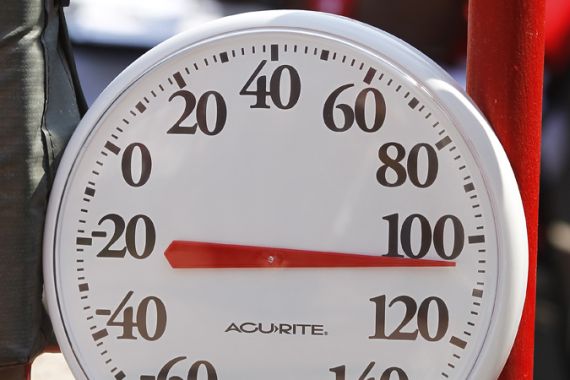‘Heat index’ measures true summer feel
An in-depth look at the various effects of temperature, humidity and the “heat index” on the human body.

 |
| Deserts are often found in regions with extremely high heat index in the summer months [Getty/Gallo] |
With parts of the US and Europe experiencing heat wave conditions, the impact of heat upon the human body is often underestimated.
Combating the effects is essential, especially in those regions of the world where heat and other factors combine to make this a regularly occurring event.
Keep reading
list of 4 itemsAsia bears biggest climate-change brunt amid extreme weather: WMO
Photos: Highest-level rainstorm warning issued in south China’s Guangdong
Europe endured record number of ‘extreme heat stress’ days in 2023
The effect of heat varies considerably, from person to person. Physical condition, liquid intake and degree of exertion are just some of the factors which may affect a person’s ability to function in hot conditions.
How the body controls its temperature
In order to keep cool, the body perspires, and as the liquid evaporates, it cools the skin. If that is not sufficient to control body temperature, exhaustion is likely to follow.
This may show with signs of rapid breathing, a fast pulse and excessive sweating.
The next stage is heat stroke, where the body’s temperature exceeds 40.6 degrees Celsius.
This presents itself as, surprisingly, hypothermia, where the body stops sweating and the pulse becomes rapid and strong and dizziness follows.
Treatment of heat stroke
Heat stroke requires rapid treatment and sometimes may prove fatal.
In order to bring about a reduction in body temperature, the victim should be placed in a cool, or at least, shaded area.
Cool compresses or even immersion in cool, but not cold, bathwater may accelerate the cooling process. As victims are usually dehydrated, the administration of fluids is also necessary.
Importance of the ‘heat index’
The effects generated by heat on the body are not simply related to air temperature.
The relative humidity – the amount of water vapour that can be held in the air at a given temperature – is also an important factor. The combined effect of air temperature and relative humidity is known as the heat index, the human-perceived equivalent temperature.
In other words, how hot does it feel?
As already discussed, the body cools itself by evaporating perspiration from the skin, thereby decreasing body temperature.
But when the relative humidity is high, evaporation is greatly reduced, as the air is holding a lot of moisture. Therefore, the body’s own cooling mechanism becomes inefficient.
The heat index is applied to air temperatures above 27 degrees Celsius and relative humidity above 40 per cent.
The index, as with air temperature, is measured in the shade. Bright sunshine may increase the heat index by a margin of 8 degrees.
With a heat index between 27 and 32 degrees, the effects of temperature may begin with cramps; as the index increases to 32 to 41 degrees, heat exhaustion and heat stroke may follow.
The danger level is reached at 41 to 54 degrees, when prolonged activity is likely to result in heat stroke. In excess of 54 degrees, conditions are extremely dangerous and heat stroke is imminent.
Extremes in the Middle East
We usually associate the combination of heat and humidity with tropical climes found in Central Asia, Central Africa, Amazonia and Florida.
In these places, rising temperatures and increasing relative humidity often lead to large-scale convective clouds – which may result in thunderstorms. In turn, this may cause the relative humidity to drop and conditions to become more bearable.
The highest heat indices are therefore found in parts of the Middle East, where the extreme heat of a desert climate is not inhibited by a build-up of daytime cloud. Here, a slight breeze from the Arabian Gulf or Red Sea may be all that is required to produce staggeringly high readings.
Around Dhahran, Saudi Arabia, in July 2003, a temperature of 42 degrees combined with a relative humidity of 68 per cent to give a heat index of 78 degrees!
Addressing the threat
Here in Qatar, the summer until this week has been hot but very dry with relative humidity often as low as 5 per cent. Over the last few days, a shift in the wind has brought moist air in from the Gulf, causing the relative humidity to rocket to 65 per cent and the heat index to hit a very uncomfortable 47 degrees.
This is of great concern to both the public and private employers, anxious about the health, wellbeing and efficiency of their employees.
Some employers are alerting their staff to the dangers posed by the high heat index and advising them on safe work practices. The government, too, has taken action, restricting the mid-day work hours of those employed outdoors, when the sun is at its strongest.
For those living in more temperate climes, heat index is rarely discussed in weather forecasts. It may be an issue for a few days each year, usually when hot Mediterranean air drifts northwards.
In tropical and arid regions, the heat index has far more meaning, and ignoring the consequences may have very serious consequences.